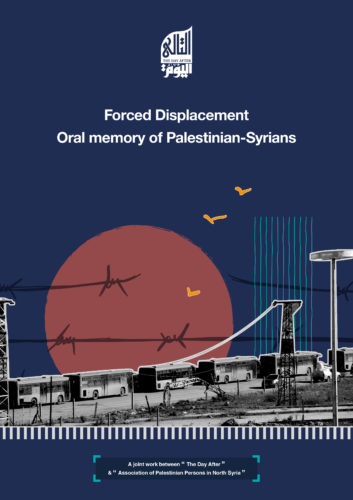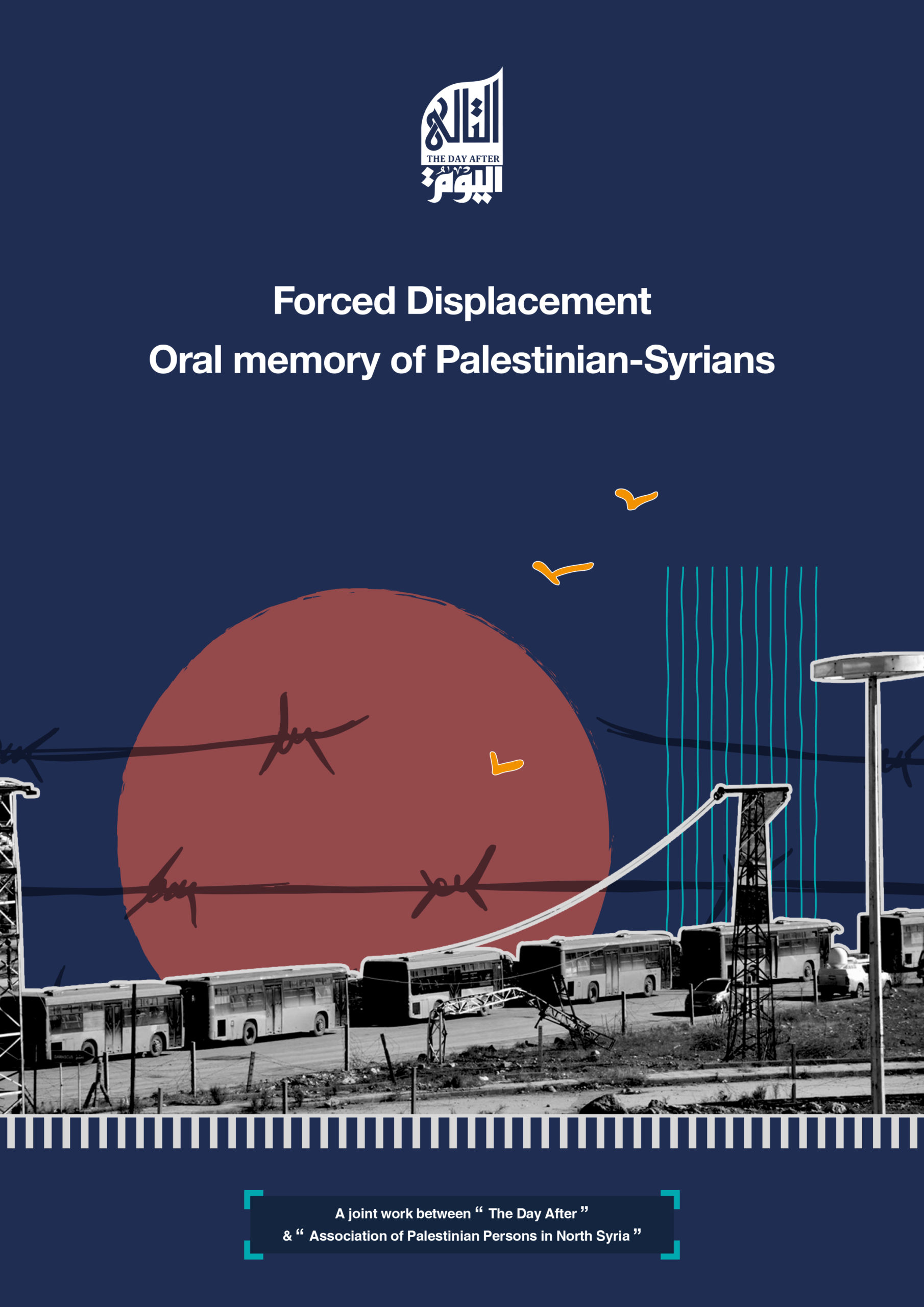
![]() Publish date: March 2023
Publish date: March 2023
In 2011, the number of Palestinians in Syria reached about 600,000, according to estimates by the United Nations Relief and Works Agency for Palestine Refugees (UNRWA).
The Palestinian refugees who migrated in 1948 to Syria were given, according to Law 260 of 1956, rights to property, work, education, and government jobs that are better than what they had in some neighboring countries while preserving their national identity and their right of return.
For more than 60 years, Palestinians have shared their lives and experiences with Syrians. After the revolution, they also shared the suffering of bombing, siege, security pressures, and of course displacement for the second and sometimes third time.
The objective of this paper is to provide a platform that combines the two experiences, and that is documenting oral testimonies of a number of Palestinian Syrians who experienced forced displacement. It combines two overlapping vulnerabilities and opens up a historical dimension represented in linking the narrators whose testimonies we have documented based on their own experiences, and what they have previously heard from the tales of their grandparents about the first displacement.
The book, which is a joint work between “The Day After” & “Association of Palestinian Persons in North Syria”, aims to humanize this experience and present it through the eyes of those who saw it, through ten testimonies about the recent Palestinian-Syrian uprooting.
This work relied on video or recorded interviews conducted between December 2021 and February 2022. The interviews were then transcribed and edited in a way that preserves their personal character, the privacy of the experience, and each individual’s language, as well as the convictions of the owners.
The book was divided according to the testimonies of the narrators into nine chapters, each of which includes a testimonial, bearing the experience of its owner, which is similar to the experiences of hundreds of Palestinian-Syrians.
The witnesses were selected from various Palestinian-Syrian camps or gatherings, in the hope of presenting the biggest picture possible of their many experiences of forced displacement, without, of course, aspiring to comprehensive, exemplary, or representative coverage. The diversity of the witnesses allowed us to shed light on different aspects of this experience, as well as its general Syrian background.
